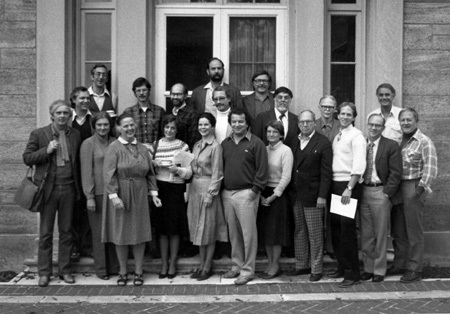Households: Changing Form and Function
Date
Oct 8-15, 1981Organized by
Robert M. Netting and Richard R. WilkLocation
Seven Springs Conference Center, Mt. Kisco, New YorkPublications
Households: Comparative and Historical Studies of the Domestic Group (R.M. Netting and R.R. Wilk, Eds.) University of California Press, Berkeley, 1984.Participants
- Eric J. Arnould University of Arizona, USA
- Anthony T. Carter University of Rochester, USA
- William A. Douglass University of Nevada, USA
- Brian L. Foster Arizona State University, Tempe, USA
- Eugene A. Hammel University of California, Berkeley, USA
- David Herlihy Harvard University, USA
- Peter Kunstadter East-West Center, USA
- Peter Laslett Cambridge Group for the History of Population & Social Structure, UK
- Olga F. Linares Smithsonian Tropical Research Institute, Panama
- Orvar Lofgren Lund University, Sweden
- Robert S. Merrill University of Rochester, USA
- Arthur D. Murphy University of Georgia, USA
- Robert M. Netting University of Arizona, USA
- Lita Osmundsen Wenner-Gren Foundation, USA
- Andrejs Plakans Iowa State University, USA
- Martine Segalen Centre d’Ethnologie Francaise, France
- Henry A. Selby University of Texas, USA
- Richard R. Wilk University of California, Santa Cruz, USA
- Arthur P. Wolf Stanford University, USA
- Sylvia Yanagisako Stanford University, USA
ORGANIZER’S STATEMENT: “Is the household a significant unit in the description, comparison, and analysis of human societies?” In 1981 a group of eminent anthropologists and historians were brought together to explore this question. They presented new research on what households do, how they function in society, and the processes by which they change through time. The resulting volume brought together seventeen important, ground-breaking papers prepared for this conference.
Because the household can mean many things to many people it has often defied definition and serious analysis. The editors of Households note the difficulties inherent in the formulation of a single, unitary definition of the household and construct their own usable, cross-cultural definition, identifying potentially overlapping functional spheres of production, distribution, transmission, reproduction, and co-residence. Basic issues of methodology and theory are outlined and discussed, moving beyond earlier scholarly emphasis on evolution and typology.
Wenner-Gren Symposium #87
